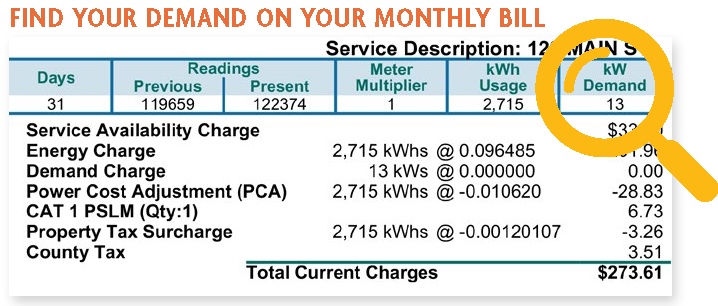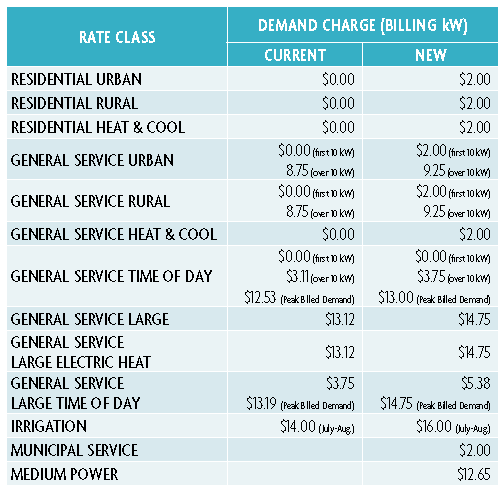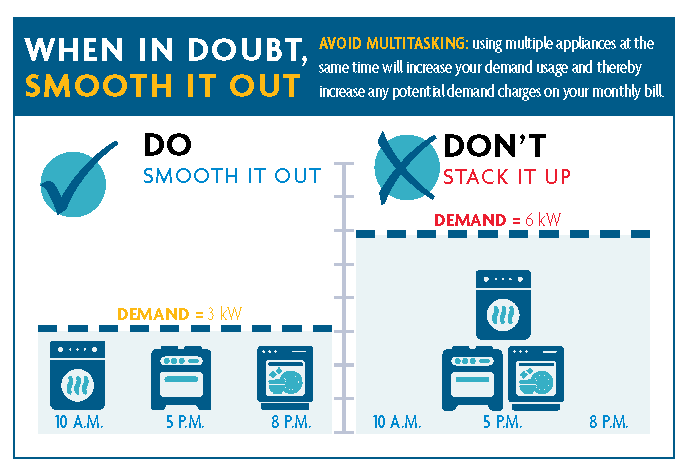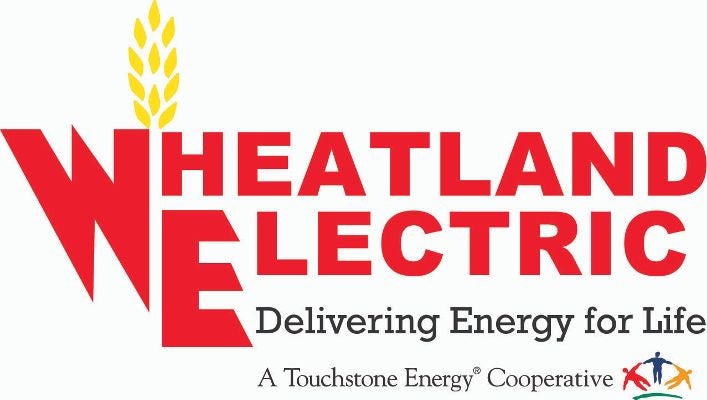As part of the three-part rate structure recently approved by the WEC Board of Trustees, members will soon see a demand charge as part of their electric bill.
Demand is determined by the highest level of power in kilowatts (kW) that a co-op member draws from the grid during any 15-minute interval in each billing cycle. Demand is different from overall energy consumption, which measures how much electricity a member uses over a period of time and is measured in kWh.
Peak demand is a measure of your highest monthly demand, which is listed on the back side of your monthly WEC electric bill.

of your monthly bill. WEC will begin charging for kilowatt (kW) demand on residential
accounts in April for the March usage.
Beginning with your April 2024 bill, which reflects March 2024 usage, demand will be billed (per kW) based on your existing rate class. The rate classes can be found in the chart below.

WEC currently purchases kilowatt-hours from our power supplier (Sunflower Electric Power Corp.) based on the average demand of our members, which means that when members use more electricity during peak demand periods, it often costs more. Peak hours often occur during the early morning when members are getting ready for school or work and in the early evening when they are cooking dinner, doing chores (like laundry and dishes), and using electronic devices.
The average residential household (using just under 800 kWh in a billing cycle) typically generates an average demand charge of 7 kW. Under the new rate structure, this residential household would see $14 ($2 x 7 kW) as their demand charge.
The WEC Board of Trustees approved the three-part rate structure, which includes demand billing, during a public, open meeting held Dec. 19, 2023, in Scott City, which was open to all members.
The decision followed the conclusion of a cost-of-service study completed late last year by C.H. Guernsey & Associates, our rate consultants. This cost-of-service study determined that base rates would need to increase by 9% overall for WEC to continue to provide reliable electric service and cover increasing operational costs, affected by rising costs and inflation of electric utility materials.
Demand charges more accurately and fairly collect costs from the overall cooperative membership because utilities like ours need to build and maintain infrastructure capable of meeting the highest demand peaks.
It also gives members more control of their electric bill by taking usage practices into account. By spreading out the use of major appliances and other high-demand items, members can avoid increased demand charges and potentially lower their electric costs (see below).

WEC members are encouraged to use their SmartHub data to see when their energy use increases and consider what electric devices are in use during those times. The best way to reduce demand is by spreading out the use of those items in your home.
For example, starting the laundry and the dishwasher at the same time you start preheating the oven creates high energy use and can peak demand. Instead, run your dishwasher at night when everyone has gone to bed, cook with an air fryer instead of the oven, and don’t start your dryer at the same time you start dinner.
By spreading out your common household chores rather than multitasking, you can lower your demand and potentially save money on your energy bill!
To view tariffs in full for each rate class please visit www.weci.net/tariffs. For specific questions about your account, please call your local Wheatland office.

